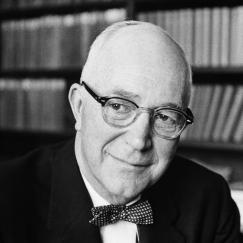If students are not trained to ask basic questions about the images which confront them, if they are not asked to examine the knowledge and assumptions which they already possess, they are being denied the opportunity to develop the most simple and essential critical tools.

Srivi Ramasubramanian


Gordon
As a child growing up in
As a child growing up in India, I witnessed how color TV became popular in the 1980s and how satellite television dramatically affected our family media habits in the 1990s; as a young adult, I witnessed how the rise of digital and social media in the new millennium drastically shifted the nature of mediated communication.
By focusing my scholarship on the stereotyping effects of popular media, I was following the path pioneered by Allport and Cantril (1935), which was then furthered by media psychologists Dolf Zillmann and Jennings Bryant (1994; 1986) in the second half of the twentieth century. These founding figures of the media-effects tradition examined how popular culture and media entertainment influenced audiences’ attitudes and behaviors. When I arrived at Pennsylvania State University to get a Ph.D. in interdisciplinary mass communication, I was fortunate to inherit this rich legacy of empirical rigor, social-science research methods, and media-effects theories when I was adopted into the academic lineage of the Zillmann-Bryant school of media psychology as the first advisee of Mary Beth Oliver and as a student of S. Shyam Sundar.
My family history is rooted in research and practice in media and communication. A contemporary of Allport’s on another continent, my great-grandfather P. Vishwanatha Iyer, a journalist and freedom fighter, was working as an associate editor of a leading national newspaper, the Hindu. Although I never met him, his inspirational rags-to-riches story played an important role in shaping my decision to choose communication as my major. He pioneered research on media history in India by editing several volumes, including The History of Indian Journalism, which remains an important reference collection. When Mahatma Gandhi walked across India from village to village to resist salt taxes imposed on the common people, my great-grandfather Iyer joined this civil disobedience movement and wrote about it for the Hindu.
Gandhi’s effective communication efforts toward raising consciousness among colonizers and unifying and mobilizing Indian citizens to fight for their freedom using nonviolent means remain a source of inspiration for people around the world, especially for scholars committed to social justice and nonviolence. Core Gandhian principles such as ahimsa (nonviolence), satyagraha (civil disobedience), and self-sufficiency are founded in universal positive human values. These principles of inclusiveness, diversity, and intergroup harmony have had a significant impact on my scholarship on media literacy.
Guided by Allport’s foundational scholarship on intergroup relations and my great-grandfather’s association with Gandhian values, my scholarship has focused on media literacy, intergroup harmony, and social change. Specifically, my research examines media portrayals of race and gender, the effects of positive and negative stereotypes on audience attitudes, and the effectiveness of counter-stereotypical media exemplars and media literacy training in prejudice reduction. It has theorized about the complex affective, cognitive, and policy-decision–making effects of stereotypes and addressed conceptual issues in media literacy education and prejudice reduction.